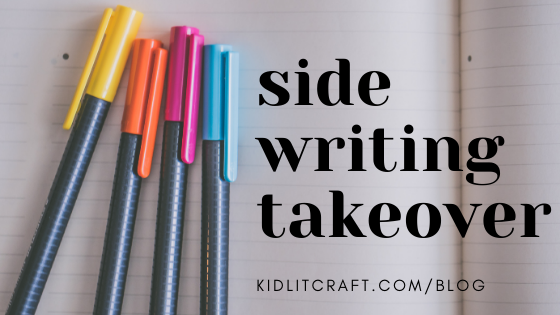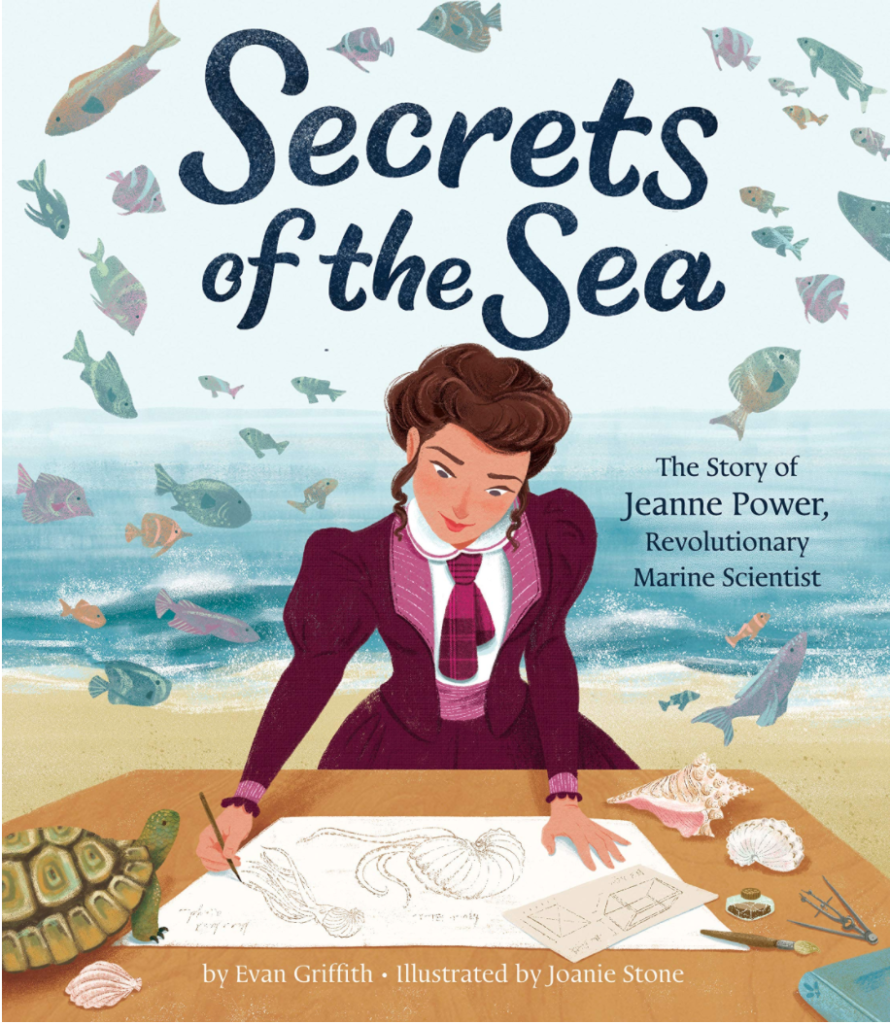interview by Anne-Marie Strohman
Sidewriting Takeover brings together writers of picture books, middle grade, and young adult fiction to explore how writing outside of a draft can help deepen your drafts and revisions. Each writer shares an exercise that they’ve found helpful. If you missed our initial post: START HERE.
Evan Griffith is a thoughtful writer, whose work intertwines the lives of people and animals–his first two published books are a picture book biography of a marine biologist and a middle grade novel about an eleven-year-old boy who finds his voice to speak up for Florida manatees. His curiosity and exploration show up in his work and in this post, and I hope you’ll be as inspired by him as I am. –Anne-Marie
KidLit Craft: How has sidewriting become a part of your writing process? Were you always a sidewriter?
Evan Griffith: I suppose I’ve always been a sidewriter, in the sense that I’ve always written a lot of material that doesn’t make it into my drafts. But it took a while for me to get intentional about it and appreciate it as a creative exercise.
I think that for many writers the idea of sidewriting is initially off-putting, especially for the productivity-obsessed perfectionists among us. The thought goes: Why would I “waste” time producing words that nobody will ever read? But a story draft really is like the visible tip of an iceberg—it’s supported by the depth of your mastery of the story, the characters, and the world, which you can develop through sidewriting.
Now it’s a regular part of my process, particularly for novels. I turn to sidewriting when A) I’m just beginning to explore a new idea or B) I’m stuck in the drafting process and realize I don’t know my characters or world as deeply as I need to.
KLC: At what points in the process of writing a novel do you sidewrite most?
EG: There’s usually a long period of exploratory writing after I get an idea and before I begin drafting. I’ll write random scenes, character studies, letters from my character to me, and so on, all to get a feel for the mood, tone, and style of the story. If the story takes shape through these exercises—and, crucially, if it holds my interest—then I feel more confident going into the drafting process. Some of those early scenes I wrote may make it into the draft. Many won’t.
I also sidewrite when I get feedback from my critique partners, my agent, or an editor that I need to process before diving into revision. If they point out that a secondary character isn’t feeling fully realized yet, for example, I’ll do some sidewriting around that character until they feel more three-dimensional in my mind and heart. Then I can approach the revision with more intention and confidence.
At any stage of the process, sidewriting is like a training ground where I can get the knowledge, tools, and bravery to return to the story.
KLC: How does sidewriting help you?
EG: It gives me deeper insights into literally every aspect of my story. It gives me a safe space to play and write recklessly, knowing that nobody else will ever read it. When I get stuck with drafting, it gives me a meaningful way to continue to develop the story. Plus, sometimes it’s just fun.
Sidewriting Challenge: Process Journal
I’m a big fan of getting personal with journal-style sidewriting exercises. When I’m feeling discouraged about a story, I write about why I want to tell this story—what I want to communicate with it and why it matters to me.
Sidewriting Challenge: Travel Brochure
Here’s an especially fun creative exercise: If you’re writing a fantasy or science-fiction story, create a travel brochure to your fictional world! Bonus points if you illustrate it. (Yes, I developed this for kids, but aren’t we all kids at heart?)

Evan Griffith is the author of Secrets of the Sea: The Story of Jeanne Power, Revolutionary Marine Scientist (Clarion, 2021) and Manatee Summer, a middle-grade novel (forthcoming from Quill Tree/Harper in 2022). He studied creative writing at the University of North Carolina at Chapel Hill and received his MFA in Writing for Children and Young Adults at the Vermont College of Fine Arts. He worked for several years as an editor at Workman Publishing, where he specialized in non-fiction for children and adults, and he continues to edit books on a freelance basis. Through his role as the youth programming specialist at The Writing Barn, a creative writing education center, he also teaches online writing classes for kids. He lives in Austin, Texas with a mischievous tuxedo cat and several overflowing bookshelves.
For more of our Sidewriting Takeover series, check out these posts:
Exploring a Character’s Misbelief with Jen Jobart
Asking the Right Questions with Louise Hawes
Riffing on Your Influences and Auditioning Your Characters with Jasmine A. Stirling
Start with a Glimmer with Sarah Aronson
Write an “I Am From” Poem with Beth Mitchell
Subscribe to our monthly newsletter: it’s full of writing tips, featured author content, and inspiration.
Anne-Marie Strohman (co-editor) writes picture books, middle grade novels, and young adult short stories and novels. She is trained as a teacher, an editor, and a scholar, specializing in Renaissance Literature. She holds an MFA in Writing for Children and Young Adults from Vermont College of Fine Arts and is an active member of SCBWI. Find her at amstrohman.com and on Twitter @amstrwriter.



COMMENTs:
0